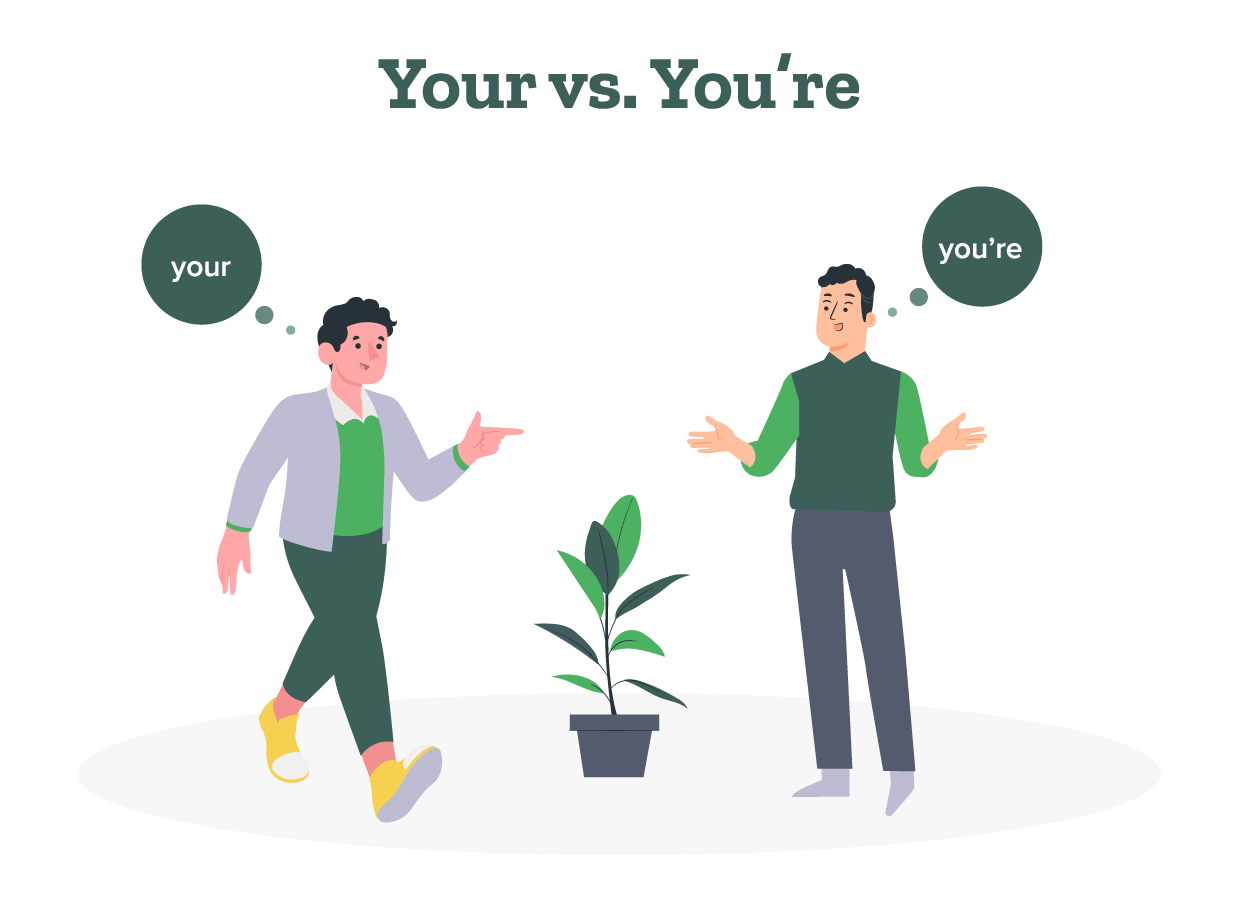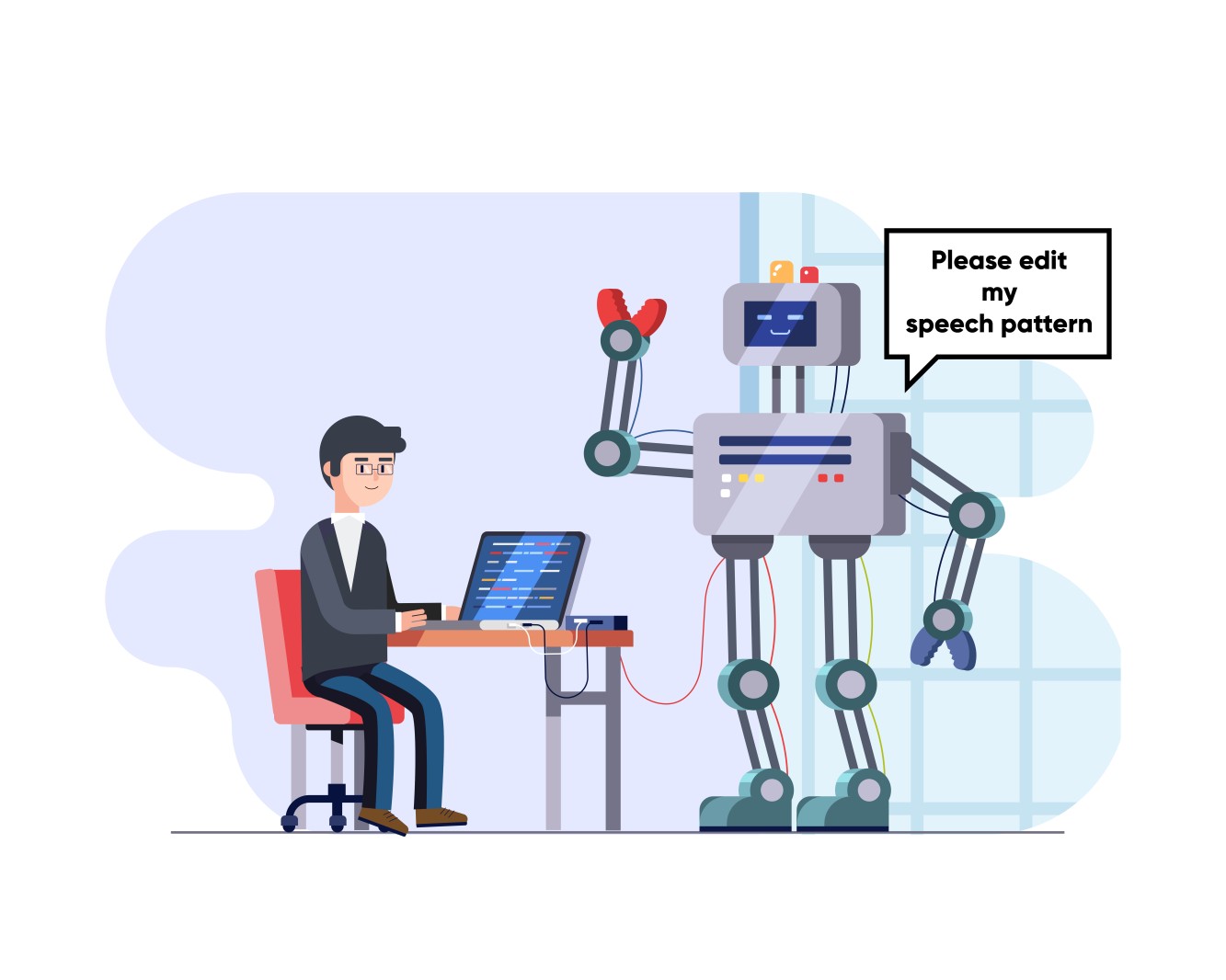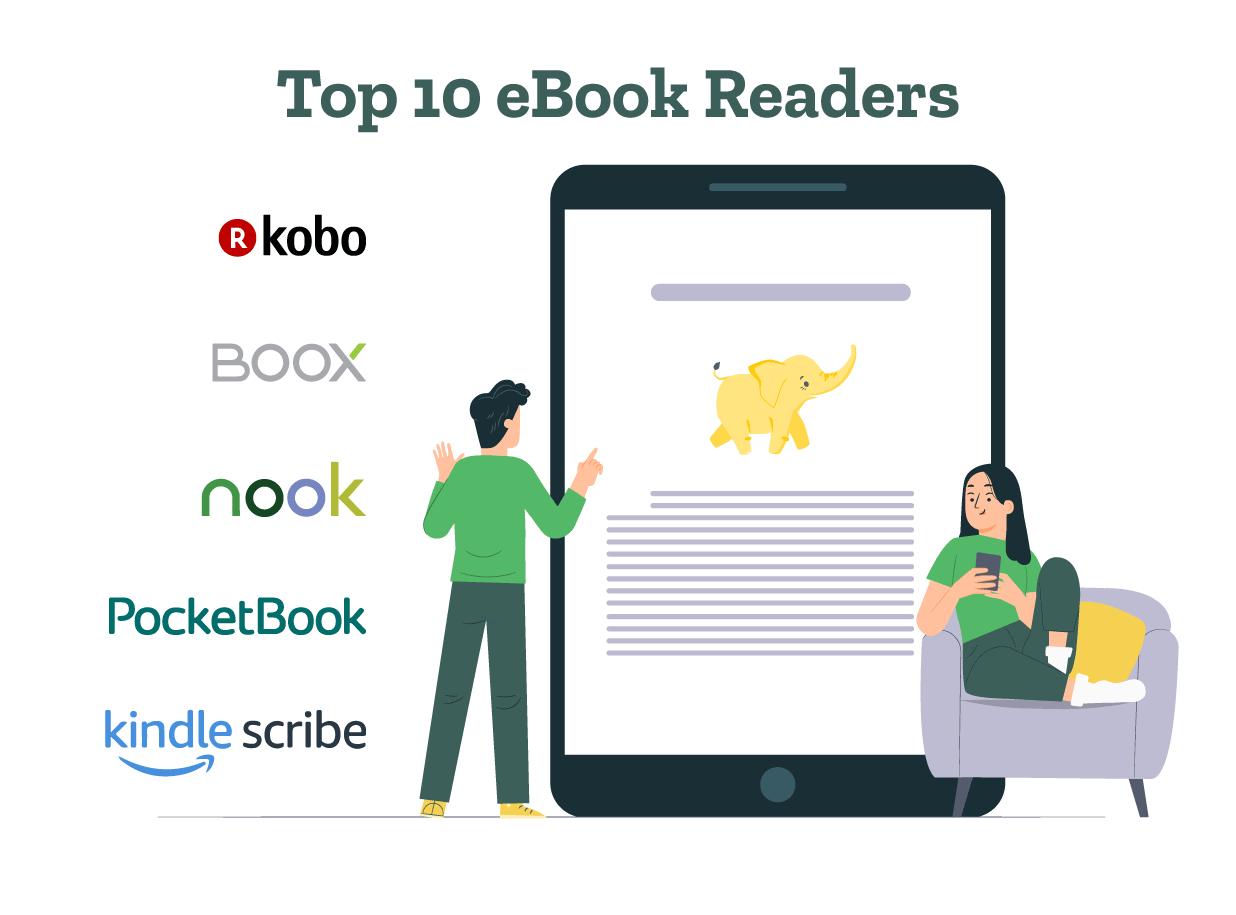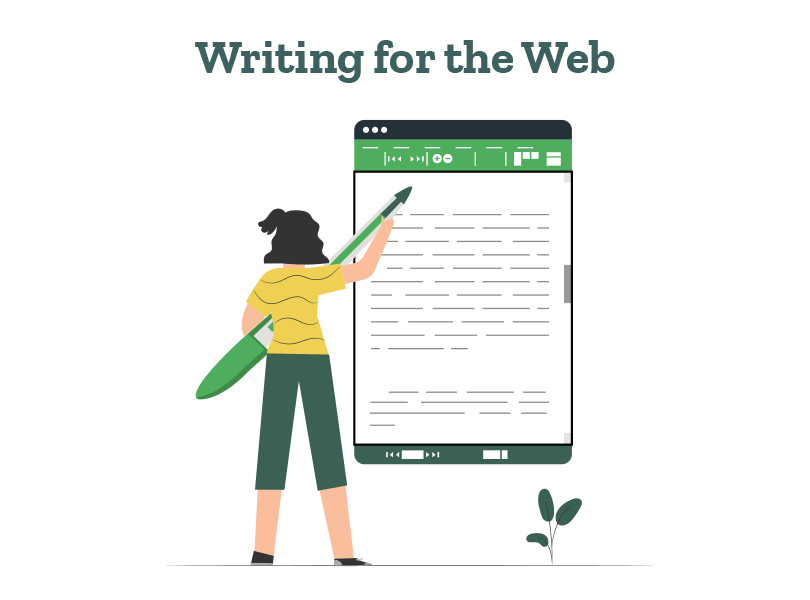- A List of Writing Contests in 2022 | Exciting Prizes!
- Em Dash vs. En Dash vs. Hyphen: When to Use Which
- Book Proofreading 101: The Beginner’s Guide
- Screenplay Editing: Importance, Cost, & Self-Editing Tips
- Screenplay Proofreading: Importance, Process, & Cost
- Script Proofreading: Rates, Process, & Proofreading Tips
- Manuscript Proofreading | Definition, Process & Standard Rates
- Tips to Write Better if English Is Your Second Language
- Novel Proofreading | Definition, Significance & Standard Rates
- Top 10 Must-Try Writing Prompt Generators in 2024
- 100+ Creative Writing Prompts for Masterful Storytelling
- Top 10 eBook Creator Tools in 2024: Free & Paid
- 50 Timeless and Unforgettable Book Covers of All Time
- What Is Flash Fiction? Definition, Examples & Types
- 80 Enchanting Christmas Writing Prompts for Your Next Story
- Your Guide to the Best eBook Readers in 2024
- Top 10 Book Review Clubs of 2025 to Share Literary Insights
- 2024’s Top 10 Self-Help Books for Better Living
- Writing Contests 2023: Cash Prizes, Free Entries, & More!
- What Is a Book Teaser and How to Write It: Tips and Examples
- Audiobook vs. EBook vs. Paperback in 2024: (Pros & Cons)
- How to Get a Literary Agent in 2024: The Complete Guide
- Alpha Readers: Where to Find Them and Alpha vs. Beta Readers
- Author Branding 101: How to Build a Powerful Author Brand
- A Guide on How to Write a Book Synopsis: Steps and Examples
- How to Write a Book Review (Meaning, Tips & Examples)
- 50 Best Literary Agents in the USA for Authors in 2024
- Building an Author Website: The Ultimate Guide with Examples
- Top 10 Paraphrasing Tools for All (Free & Paid)
- Top 10 Book Editing Software in 2024 (Free & Paid)
- What Are Large Language Models and How They Work: Explained!
- Top 10 Hardcover Book Printing Services [Best of 2024]
- 2024’s Top 10 Setting Generators to Create Unique Settings
- Different Types of Characters in Stories That Steal the Show
- Top 10 Screenplay & Scriptwriting Software (Free & Paid)
- 10 Best AI Text Generators of 2024: Pros, Cons, and Prices
- Top 10 Must-Try Character Name Generators in 2024
- 10 Best AI Text Summarizers in 2024 (Free & Paid)
- 2024’s 10 Best Punctuation Checkers for Error-Free Text
- 11 Best Story Structures for Writers (+ Examples!)
- How to Write a Book with AI in 2024 (Free & Paid Tools)
- Writing Contests 2024: Cash Prizes & Free Entries!
- Patchwork Plagiarism: Definition, Types, & Examples
- Simple Resume Formats for Maximum Impact With Samples
- What Is a Complement in a Sentence? (Meaning, Types & Examples)
- What are Clauses? Definition, Meaning, Types, and Examples
- Persuasive Writing Guide: Techniques & Examples
- How to Paraphrase a Text (Examples + 10 Strategies!)
- A Simple Proofreading Checklist to Catch Every Mistake
- Top 10 AI Resume Checkers for Job Seekers (Free & Paid)
- 20 Best Comic Book Covers of All Time!
- How to Edit a Book: A Practical Guide with 7 Easy Steps
- How to Write an Autobiography (7 Amazing Strategies!)
- How to Publish a Comic Book: Nine Steps & Publishing Costs
- Passive and Active Voice (Meaning, Examples & Uses)
- How to Publish a Short Story & Best Publishing Platforms
- What Is Expository Writing? Types, Examples, & 10 Tips
- 10 Best Introduction Generators (Includes Free AI Tools!)
- Creative Writing: A Beginner’s Guide to Get Started
- How to Sell Books Online (Steps, Best Platforms & Tools)
- Top 10 Book Promotion Services for Authors (2025)
- 15 Different Types of Poems: Examples & Insight into Poetic Styles
- 10 Best Book Writing Apps for Writers 2025: Free & Paid!
- Top 10 AI Humanizers of 2025 [Free & Paid Tools]
- How to Write a Poem: Step-by-Step Guide to Writing Poetry
- 100+ Amazing Short Story Ideas to Craft Unforgettable Stories
- The Top 10 Literary Devices: Definitions & Examples
- Top 10 AI Translators for High-Quality Translation in 2025
- Top 10 AI Tools for Research in 2025 (Fast & Efficient!)
- 50 Best Essay Prompts for College Students in 2025
- Top 10 Book Distribution Services for Authors in 2025
- Best 101 Greatest Fictional Characters of All Time
- Top 10 Book Title Generators of 2025
- Best Fonts and Sizes for Books: A Complete Guide
- What Is an Adjective? Definition, Usage & Examples
- How to Track Changes in Google Docs: A 7-Step Guide
- Best Book Review Sites of 2025: Top 10 Picks
- Parts of a Book: A Practical, Easy-to-Understand Guide
- What Is an Anthology? Meaning, Types, & Anthology Examples
- How to Write a Book Report | Steps, Examples & Free Template
- 10 Best Plot Generators for Engaging Storytelling in 2025
- 30 Powerful Poems About Life to Inspire and Uplift You
- What Is a Poem? Poetry Definition, Elements, & Examples
- Metonymy: Definition, Examples, and How to Use It In Writing
- How to Write a CV with AI in 9 Steps (+ AI CV Builders)
- What Is an Adverb? Definition, Types, & Practical Examples
- How to Create the Perfect Book Trailer for Free
- Top 10 Book Publishing Companies in 2025
- 14 Punctuation Marks: A Guide on How to Use with Examples!
- Translation Services: Top 10 Professional Translators (2025)
- 10 Best Free Online Grammar Checkers: Features and Ratings
- 30 Popular Children’s Books Teachers Recommend in 2025
- 10 Best Photobook Makers of 2025 We Tested This Year
- Top 10 Book Marketing Services of 2025: Features and Costs
- Top 10 Book Printing Services for Authors in 2025
- 10 Best AI Detector Tools in 2025
- Audiobook Marketing Guide: Best Strategies, Tools & Ideas
- 10 Best AI Writing Assistants of 2025 (Features + Pricing)
- How to Write a Book Press Release that Grabs Attention
- 15 Powerful Writing Techniques for Authors in 2025
- Generative AI: Types, Impact, Advantages, Disadvantages
- Top 101 Bone-Chilling Horror Writing Prompts
- 25 Figures of Speech Simplified: Definitions and Examples
- Top 10 AI Rewriters for Perfect Text in 2025 (Free & Paid)
- Best EBook Cover Design Services of 2025 for Authors
- Writing Contests 2025: Cash Prizes, Free Entries, and More!
- Top 10 Book Writing Software, Websites, and Tools in 2025
- National Novel Writing Month (NaNoWriMo)
- Best Horror Books of All Time (Must-Read List)
- Best Book Trailer Services
- What is a Book Copyright Page?
- Final Checklist: Is My Article Ready for Submitting to Journals?
- 8 Pre-Publishing Steps to Self-Publish Your Book
- 7 Essential Elements of a Book Cover Design
- How to Copyright Your Book in the US, UK, & India
- Beta Readers: Why You Should Know About Them in 2024
- How to Publish a Book in 2024: Essential Tips for Beginners
- Book Cover Design Basics: Tips & Best Book Cover Ideas
- Why and How to Use an Author Pen Name: Guide for Authors
- How to Format a Book in 2025: 7 Tips for Book Formatting
- What is Manuscript Critique? Benefits, Process, & Cost
- 10 Best Ghostwriting Services for Authors in 2025
- ISBN Guide 2025: What Is an ISBN and How to Get an ISBN
- Best Manuscript Editing Services of 2025
- How to Hire a Book Editor in 5 Practical Steps
- Self-Publishing Options for Writers
- How to Promote Your Book Using a Goodreads Author Page
- 7 Essential Elements of a Book Cover Design
- What Makes Typesetting a Pre-Publishing Essential for Every Author?
- 4 Online Publishing Platforms To Boost Your Readership
- Typesetting: An Introduction
- Quick Guide to Novel Editing (with a Self-Editing Checklist)
- Self-Publishing vs. Traditional Publishing: 2024 Guide
- How to Publish a Book in 2024: Essential Tips for Beginners
- How to Publish a Book on Amazon: 8 Easy Steps [2024 Update]
- What are Print-on-Demand Books? Cost and Process in 2024
- What Are the Standard Book Sizes for Publishing Your Book?
- How to Market Your Book on Amazon to Maximize Sales in 2024
- Top 10 Hardcover Book Printing Services [Best of 2024]
- How to Find an Editor for Your Book in 8 Steps (+ Costs!)
- What Is Amazon Self-Publishing? Pros, Cons & Key Insights
- Manuscript Editing in 2024: Elevating Your Writing for Success
- Know Everything About How to Make an Audiobook
- A Simple 14-Point Self-Publishing Checklist for Authors
- How to Write an Engaging Author Bio: Tips and Examples
- Book Cover Design Basics: Tips & Best Book Cover Ideas
- How to Publish a Comic Book: Nine Steps & Publishing Costs
- Why and How to Use an Author Pen Name: Guide for Authors
- How to Sell Books Online (Steps, Best Platforms & Tools)
- A Simple Guide to Select the Best Self-Publishing Websites
- 10 Best Book Cover Design Services of 2025: Price & Ratings
- How Much Does It Cost to Self-Publish a Book in 2025?
- Quick Guide to Book Editing [Complete Process & Standard Rates]
- How to Distinguish Between Genuine and Fake Literary Agents
- What is Self-Publishing? Everything You Need to Know
- How to Copyright a Book in 2025 (Costs + Free Template)
- The Best eBook Conversion Services of 2025: Top 10 Picks
- 10 Best Self-Publishing Companies of 2025: Price & Royalties
- 10 Best Photobook Makers of 2025 We Tested This Year
- Book Cover Types: Formats, Bindings & Styles
- ISBN Guide 2025: What Is an ISBN and How to Get an ISBN
- A Beginner’s Guide on How to Self Publish a Book (2025)
- Index in a Book: Definition, Purpose, and How to Use It
- How to Publish a Novel: Easy Step-By-Step Guide
- How to start your own online publishing company?
- 8 Tips To Write Appealing Query Letters
- Self-Publishing vs. Traditional Publishing: 2024 Guide
- How to Publish a Book in 2024: Essential Tips for Beginners
- What are Print-on-Demand Books? Cost and Process in 2024
- How to Write a Query Letter (Examples + Free Template)
- Third-person Point of View: Definition, Types, Examples
- How to Write an Engaging Author Bio: Tips and Examples
- How to Publish a Comic Book: Nine Steps & Publishing Costs
- Top 10 Book Publishing Companies in 2025
- 10 Best Photobook Makers of 2025 We Tested This Year
- Book Cover Types: Formats, Bindings & Styles
- ISBN Guide 2025: What Is an ISBN and How to Get an ISBN
- Index in a Book: Definition, Purpose, and How to Use It
- How to Publish a Novel: Easy Step-By-Step Guide
- How to Create Depth in Characters
- Starting Your Book With a Bang: Ways to Catch Readers’ Attention
- Research for Fiction Writers: A Complete Guide
- Short stories: Do’s and don’ts
- How to Write Dialogue: 7 Rules, 5 Tips & 65 Examples
- What Are Foil and Stock Characters? Easy Examples from Harry Potter
- How To Write Better Letters In Your Novel
- On Being Tense About Tense: What Verb Tense To Write Your Novel In
- How To Create A Stellar Plot Outline
- How to Punctuate Dialogue in Fiction
- On Being Tense about Tense: Present Tense Narratives in Novels
- The Essential Guide to Worldbuilding [from Book Editors]
- What Is Point of View? Definition, Types, & Examples in Writing
- How to Create Powerful Conflict in Your Story | Useful Examples
- How to Write a Book: A Step-by-Step Guide
- How to Write a Short Story in 6 Simple Steps
- How to Write a Novel: 8 Steps to Help You Start Writing
- What Is a Stock Character? 150 Examples from 5 Genres
- Joseph Campbell’s Hero’s Journey: Worksheet & Examples
- Novel Outline: A Proven Blueprint [+ Free Template!]
- Character Development: 7-Step Guide for Writers
- What Is NaNoWriMo? Top 7 Tips to Ace the Writing Marathon
- What Is the Setting of a Story? Meaning + 7 Expert Tips
- What Is a Blurb? Meaning, Examples & 10 Expert Tips
- What Is Show, Don’t Tell? (Meaning, Examples & 6 Tips)
- How to Write a Book Summary: Example, Tips, & Bonus Section
- How to Write a Book Description (Examples + Free Template)
- 10 Best Free AI Resume Builders to Create the Perfect CV
- A Complete Guide on How to Use ChatGPT to Write a Resume
- 10 Best AI Writer Tools Every Writer Should Know About
- How to Write a Book Title (15 Expert Tips + Examples)
- 100 Novel and Book Ideas to Start Your Book Writing Journey
- Exploring Writing Styles: Meaning, Types, and Examples
- Mastering Professional Email Writing: Steps, Tips & Examples
- How to Write a Screenplay: Expert Tips, Steps, and Examples
- Business Proposal Guide: How to Write, Examples and Template
- Different Types of Resumes: Explained with Tips and Examples
- How to Create a Memorable Protagonist (7 Expert Tips)
- How to Write an Antagonist (Examples & 7 Expert Tips)
- Writing for the Web: 7 Expert Tips for Web Content Writing
- 10 Best AI Text Generators of 2024: Pros, Cons, and Prices
- What are the Parts of a Sentence? An Easy-to-Learn Guide
- What Is Climax Of A Story & How To Craft A Gripping Climax
- What Is a Subject of a Sentence? Meaning, Examples & Types
- Object of a Sentence: Your Comprehensive Guide
- What Is First-Person Point of View? Tips & Practical Examples
- Second-person Point of View: What Is It and Examples
- 10 Best AI Essay Outline Generators of 2024
- Third-person Point of View: Definition, Types, Examples
- The Importance of Proofreading: A Comprehensive Overview
- Patchwork Plagiarism: Definition, Types, & Examples
- Simple Resume Formats for Maximum Impact With Samples
- The Ultimate Guide to Phrases In English – Types & Examples
- Modifiers: Definition, Meaning, Types, and Examples
- What are Clauses? Definition, Meaning, Types, and Examples
- Persuasive Writing Guide: Techniques & Examples
- What Is a Simile? Meaning, Examples & How to Use Similes
- Mastering Metaphors: Definition, Types, and Examples
- How to Publish a Comic Book: Nine Steps & Publishing Costs
- Essential Grammar Rules: Master Basic & Advanced Writing Skills
- Benefits of Using an AI Writing Generator for Editing
- Hyperbole in Writing: Definition and Examples
- 15 Best ATS-Friendly ChatGPT Prompts for Resumes in 2025
- How to Write a Novel in Past Tense? 3 Steps & Examples
- 10 Best Spell Checkers of 2025: Features, Accuracy & Ranking
- Foil Character: Definition, History, & Examples
- 5 Key Elements of a Short Story: Essential Tips for Writers
- How to Write a Children’s Book: An Easy Step-by-Step Guide
- How To Write a Murder Mystery Story
- What Is an Adjective? Definition, Usage & Examples
- Metonymy: Definition, Examples, and How to Use It In Writing
- Fourth-Person Point of View: A Unique Narrative Guide
- How to Write a CV with AI in 9 Steps (+ AI CV Builders)
- What Is an Adverb? Definition, Types, & Practical Examples
- How to Write A Legal Document in 6 Easy Steps
- 10 Best AI Story Generators in 2025: Write Captivating Tales
- How to Introduce a Character Effectively
- What is Rhetoric and How to Use It in Your Writing
- How to Write a Powerful Plot in 12 Steps
- How to Make Money as a Writer: Your First $1,000 Guide
- How to Write SEO Content: Tips for SEO-Optimized Content
- Types of Introductions and Examples
- What is a Cliffhanger? Definition, Examples, & Writing Tips
- How to Write Cliffhangers that Keep Readers Hooked!
- How to Write a Romance Novel: Step-by-Step Guide
- Top 10 Writing Tips from Famous Authors
- 10 Best Ghostwriting Services for Authors in 2025
- What is Ghostwriting? Meaning and Examples
- How to Become a Ghostwriter: Complete Career Guide
- How to Write a Speech that Inspires (With Examples)
- Theme of a Story | Meaning, Common Themes & Examples
- 10 Best AI Writing Assistants of 2025 (Features + Pricing)
- Generative AI: Types, Impact, Advantages, Disadvantages
- Worldbuilding Questions and Templates (Free)
- How to Avoid Plagiarism in 2025 (10 Effective Strategies!)
- How to Create Marketing Material
- What Is Worldbuilding? Steps, Tips, and Examples
- How to Avoid AI Detection in 2025 (6 Proven Techniques!)
- What is Syntax in Writing: Definition and Examples
- What is a Subplot? Meaning, Examples & Types
- Writing Challenges Every Writer Should Take
- What Is a Memoir? Definition, Examples, and Tips
Still have questions? Leave a comment
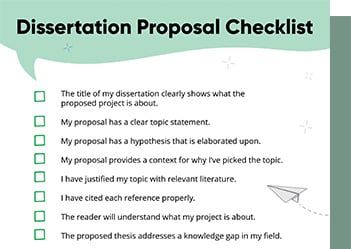
Checklist: Dissertation Proposal
Enter your email id to get the downloadable right in your inbox!
[contact-form-7 id="12425" title="Checklist: Dissertation Proposal"]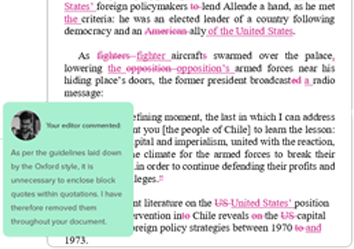
Examples: Edited Papers
Enter your email id to get the downloadable right in your inbox!
[contact-form-7 id="12426" title="Examples: Edited Papers"]Need
Editing and
Proofreading Services?

How to Write Cliffhangers that Keep Readers Hooked!
 Jul 14, 2025
Jul 14, 2025 7
min read
7
min read
When it comes to keeping readers hooked, there’s no better way to do it than by writing a cliffhanger!
Originating in the work A Pair of Blue Eyes by Thomas Hardy, the first printed use of the term ‘cliffhanger’ was in the 1937 edition of the Merriam–Webster dictionary. It has historically been used as a plot device to keep the audience guessing and hooked on the story, whether in the classic One Thousand and One Nights or Arabian Nights, Victorian serial novels, or modern Japanese anime and manga.
Here’s how to write the perfect cliffhanger that will keep readers hooked to your work and guess what comes next!
Written the Perfect Cliffhanger? Publish Your Book Today! Get Started
What is a cliffhanger?
Defined by the Cambridge and Merriam–Webster dictionaries as a story or situation whose ending or result is uncertain and keeps the audience in suspense, a cliffhanger is a popular plot device in books, television, and film that keeps the audience on their toes, capitalizing on their feelings of curiosity and anxiety to know what happens next to keep the franchise going. A good cliffhanger has the power to launch any number of sequels—without keeping the readers on their toes for too long, of course!
The elements of a great cliffhanger
While a cliffhanger is an effective plot device to keep a franchise going, it is important to keep reader considerations in mind while writing one. To put it simply, an ending must provide closure—it would not do to leave the readers hanging (and the characters literally so!) with regard to every single plot point they have spent the past several hours or days reading about.
While a good cliffhanger ending provides a certain amount of closure, it also leaves a few pivotal questions unresolved. It is important to keep in mind the ‘wave’ of the story—its ups and downs—and work in the cliffhangers at the most appropriate spots.
Now that we have established the basics, let’s get into the anatomy of a great cliffhanger!
1. The hook
The ‘hook’ is basically the question you leave unanswered that grabs the reader’s attention and makes them wonder what happens next, for example, what was the fate of X? What was the impact of Y’s choice? This is enough material to write the next chapter or installment and to keep the readers guessing about how the events will go.
2. The line
The ‘line’ refers to building a seamless transition from one chapter or installment to the other. It would not do to have a total disconnect between the events of one chapter or book and the next. Set the scene to ensure that the next chapter opens on the same terrain and provides the reader with continuity.
3. The sinker
If the ‘sinker’ or the part that finally captures the reader’s full attention does not land well, the objective of ending on a cliffhanger is essentially defeated. As mentioned before, the new chapter or installment should ideally open at the scene where the previous one closed, or if not, must get to provide answers for the questions left unresolved quickly.
It is important to pace the resolution well, making it too rushed would kill the suspense, but drawing out the suspense too long will bore or irritate the reader.
How to write effective cliffhangers
Confused about how to get started on writing the perfect cliffhanger? Here are some practical tips that will help:
1. Plotting vs pantsing
While it might seem tempting to go with the flow and write by the ‘seat of your pants’, when writing a cliffhanger, this is not ideal. It’s important to carefully plot out each element of the story to avoid writing yourself into a corner with situations you, as the author, have no idea how to resolve. Also, be careful about which character’s POV (point of view) you use to deliver the cliffhanger with the greatest possible impact.
2. Layering
When writing a cliffhanger, it is not necessary that there is only one question left unanswered. You can layer cliffhangers—working in various unresolved scenarios—so that your plot acquires complexity and the puzzle is a little more difficult for the reader to solve. It is ideal for this layering to be a mix of big and small questions left unanswered. Not everything needs to be tied up with a neat bow, but providing some degree of closure on other plot points is also essential to avoid frustrating the reader.
3. Foreshadowing
Planting little Easter eggs or clues that subtly point to the correct answers is a great way to write toward a cliffhanger. This is called ‘foreshadowing’—however, it must not be too obvious, as that would kill the element of suspense. The astute reader would be delighted to discover that something seemingly inconsequential was in fact an Easter egg that hinted at the right answer.
For example, the readers are shocked to discover at the end of Harry Potter and the Prisoner of Azkaban that Remus Lupin is a werewolf, but the clue was in his name after all—in Roman mythology, Remus is one of the children born to a she-wolf, whose brother Romulus went on to found the city of Rome, and ‘Lupin’ is literally Latin for ‘wolf’ or ‘wolf-like’.
Common cliffhanger mistakes (and how to avoid them)
While writing an impactful cliffhanger, here are some common mistakes to avoid:
1. Dithering and dawdling
Avoid dithering and dawdling or using flowery language and unnecessarily long sentences that will bore the reader—they are eager to find out what happens next, so keep your language snappy, fast-paced, and impactful.
2. Cheap tricks and clichés
Writing an intense cliffhanger of a scene that keeps the reader on edge, only to reveal later that it was all a dream—ever come across such a scenario before? Avoid using such cheap tricks that leave the reader feeling cheated, and provide an actual resolution to the questions raised. Similarly, avoid clichés, such as killing off a protagonist, only to later reveal that it was their evil twin who died. Such tropes have been done to death, and your readers deserve more original material.
3. Overusing suspense and unfulfilled promises
Too many cliffhangers—for instance, one at the end of every chapter—are bound to fatigue your reader. Instead, choose where to insert your cliffhangers wisely, and provide satisfactory resolutions—do not leave unfulfilled promises that would make your readers angry.
4. Genre mismatch
Book 1 in the series ends as a fast-paced, action–thriller with a tantalizing cliffhanger, only to be resolved in Book 2 as a… romance? Avoid such genre mismatches that could give your readers whiplash and leave them feeling disoriented—stay true to your original plot.
Cliffhangers in series vs standalone novels
There is a significant difference between ending a series vs. a standalone novel on a cliffhanger. While the former is made of many books and has the scope to end each book on a cliffhanger that will be resolved in the next, the latter would do better with an open ending that the readers can interpret themselves, with mini cliffhangers worked into the major arcs of the story that could be resolved as its proceeds.
Ultimately, it is important to manage your readers’ trust and expectations—do not set them up for disappointment or make false promises, as these could cost you your reader base.
Advanced cliffhanger techniques
Now that you’ve mastered how to write a cliffhanger, here are some advanced cliffhanger techniques that will blow your readers’ minds!
1. Red herrings
What’s the opposite of an Easter egg? A red herring! A red herring is a seemingly important piece of information strategically placed with the sole intention of misleading the reader. Baiting your readers with red herrings is a great way to spring an even bigger surprise on them when you finally resolve the events of your cliffhanger.
2. Multiple POVs
Viewing the cliffhanger through the eyes of not one but multiple characters can add perspective and suspense, or confuse the reader, depending on how you go about it! Make sure to reveal little tidbits of information in each POV that come together to form the big picture, and avoid confusing your readers to the point where they give up on your book.
3. Subplots
Not all cliffhangers need to happen to the protagonist, and not all of them need to come at the end of the book or chapter. That’s right—you can add layers to your supporting characters by building ‘secondary’ cliffhangers into their stories—a masterful writing technique that adds weight to your subplots and depths to your supporting cast.
Practice, practice, practice
Finally, it is important to practice writing cliffhangers so you can get this type of ending down to an art form! You can try the ‘typing in’ method—picking an existing work with cliffhangers, typing out the cliffhanger scene, and typing out your analysis of why it does or doesn’t work. You can also try writing prompts or exercises that are available a dime a dozen on the internet, or simply pick up your favorite books with cliffhangers and study their features in detail.
While you write up the perfect cliffhanger, it’s important to keep your readers’ expectations in mind. Do not make promises that you cannot deliver on, and ultimately leave them frustrated—such manipulative techniques will cost you your reader base.
It’s always a good idea to seek the advice of a beta reader or reviewer who can give you a preview of how your cliffhanger might work with your actual target audience. It is also important to know when not to use a cliffhanger—sometimes, a neat and tidy ending with a happily-ever-after is what the reader wants, for example, in a romance. Remember—when it comes to writing a great cliffhanger, it’s all about balance! Happy writing!
PaperTrue offers expert, hassle-free book self-publishing services that allow you to get your manuscript edited and published by professionals. Check them out!
Here are some more resources that may help you:



